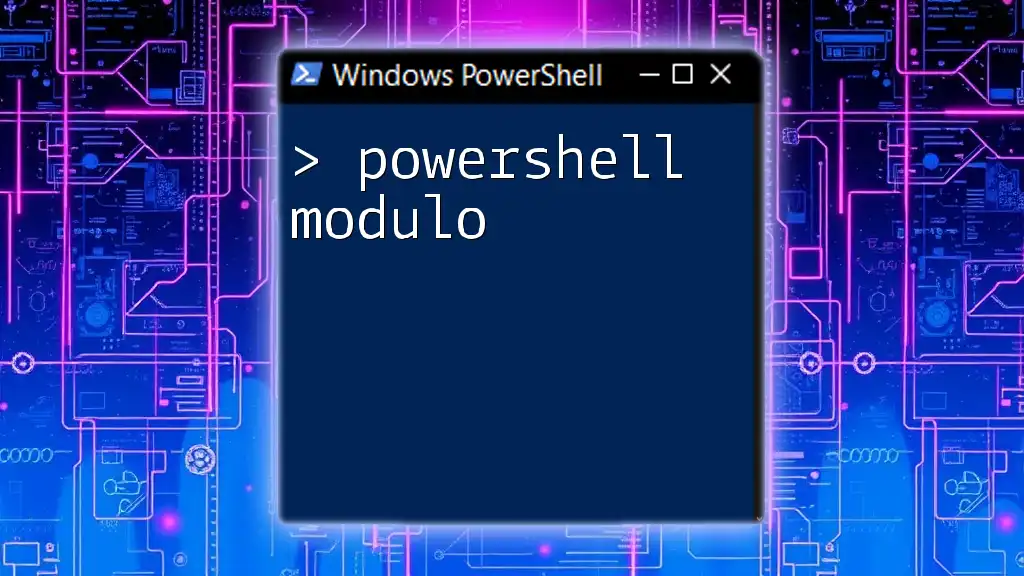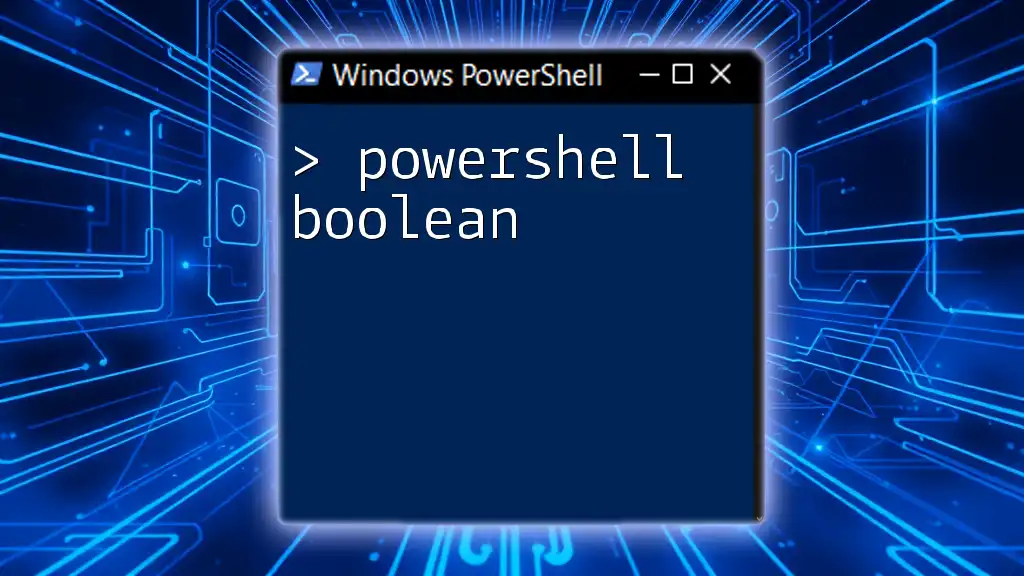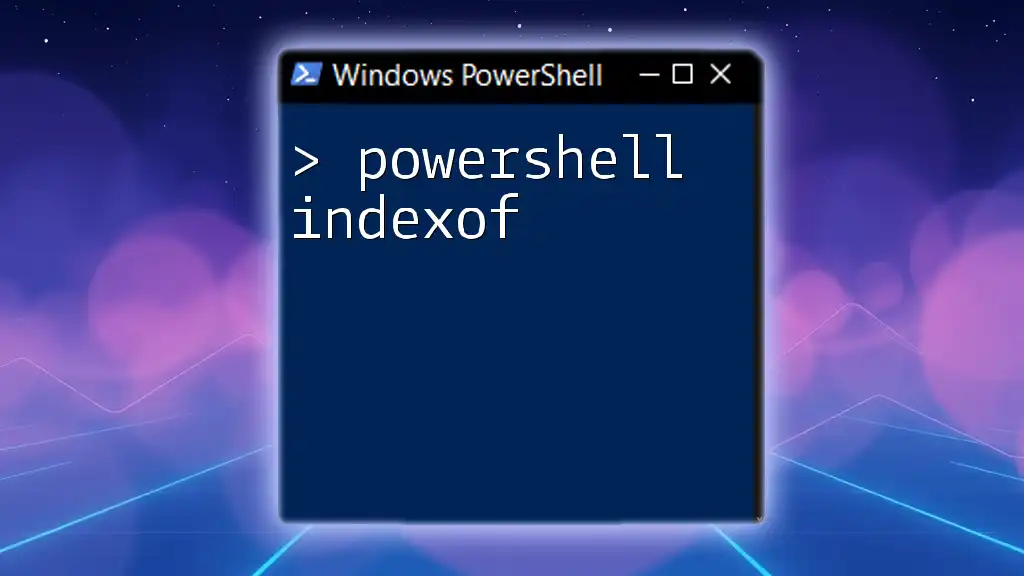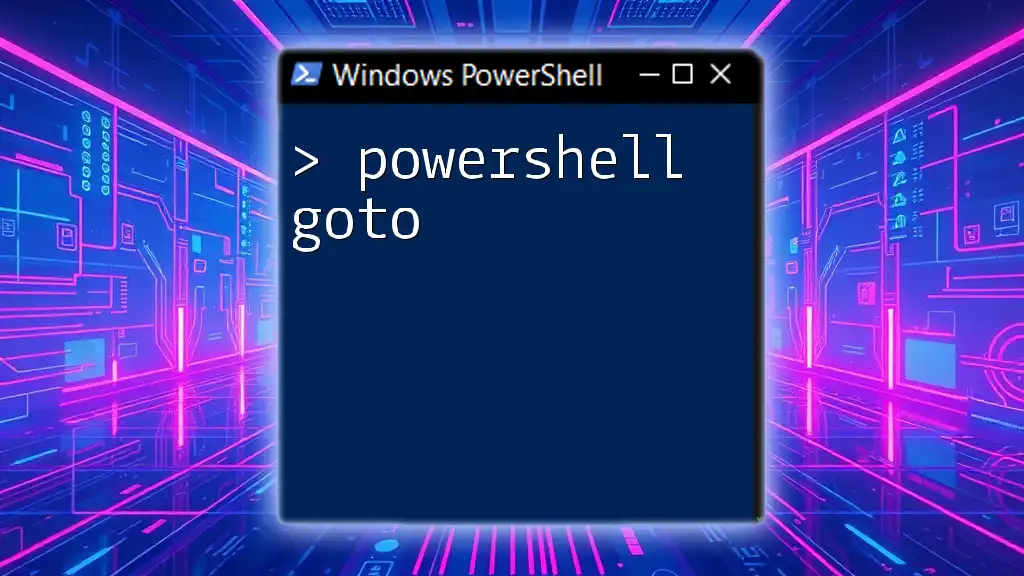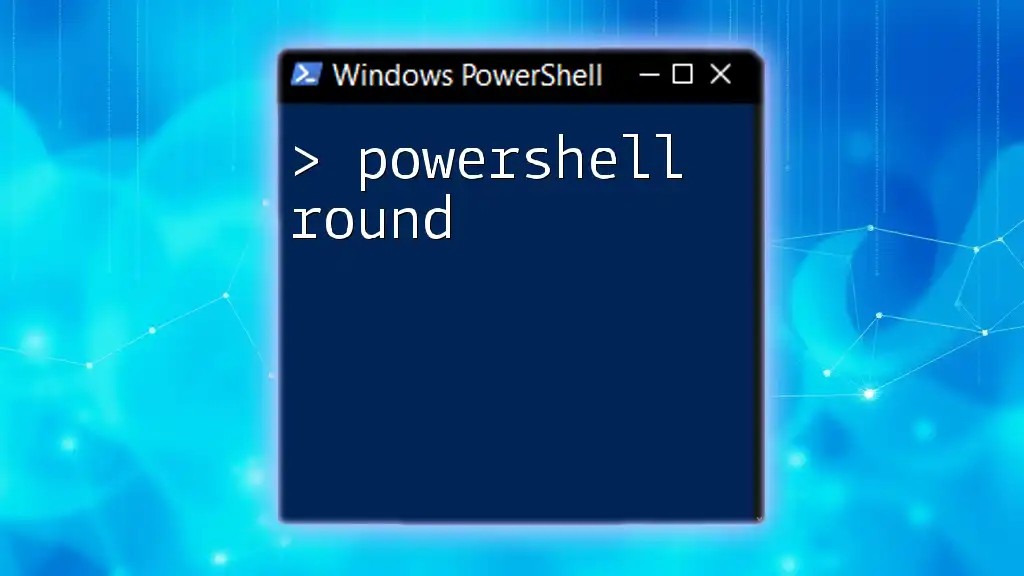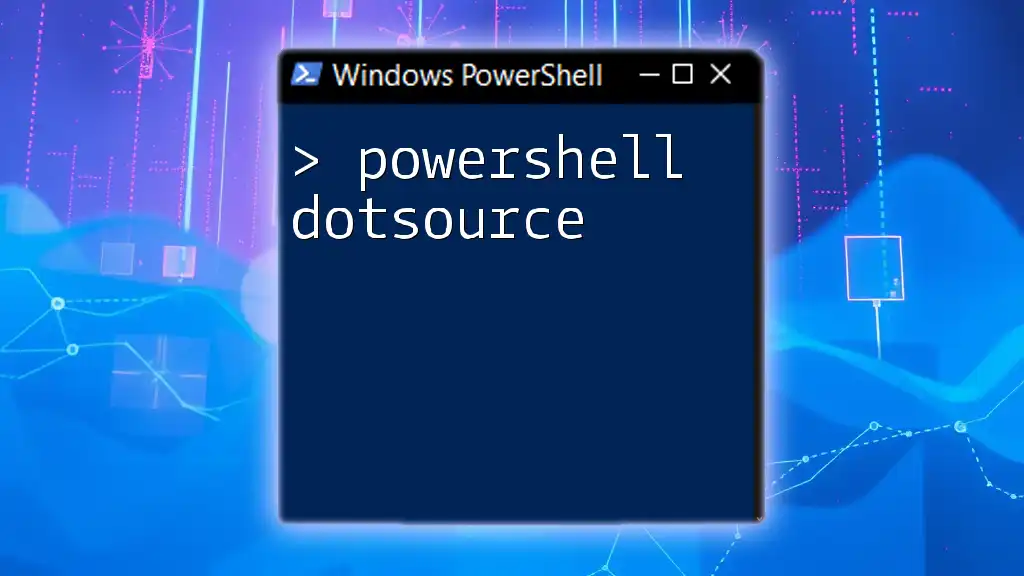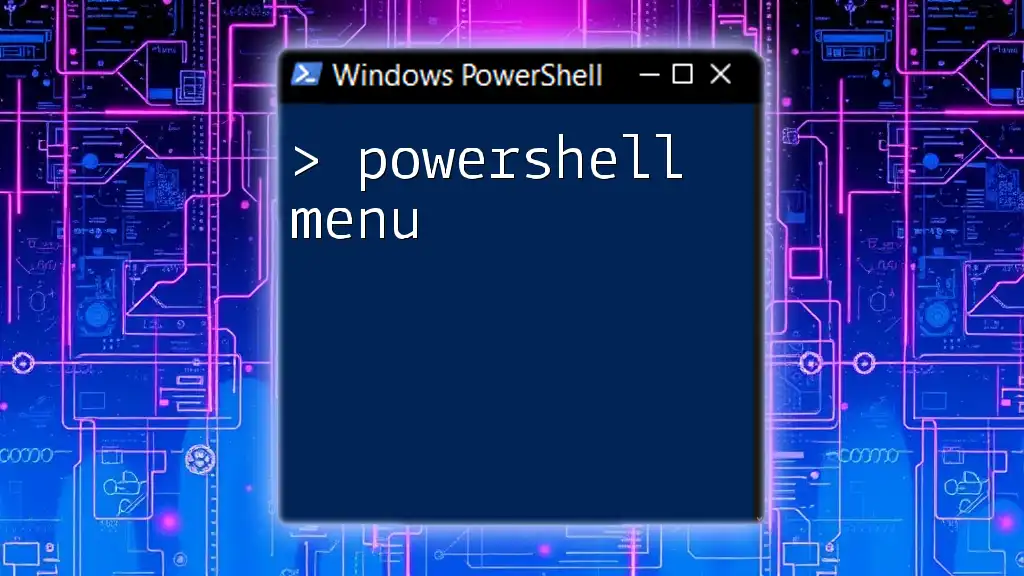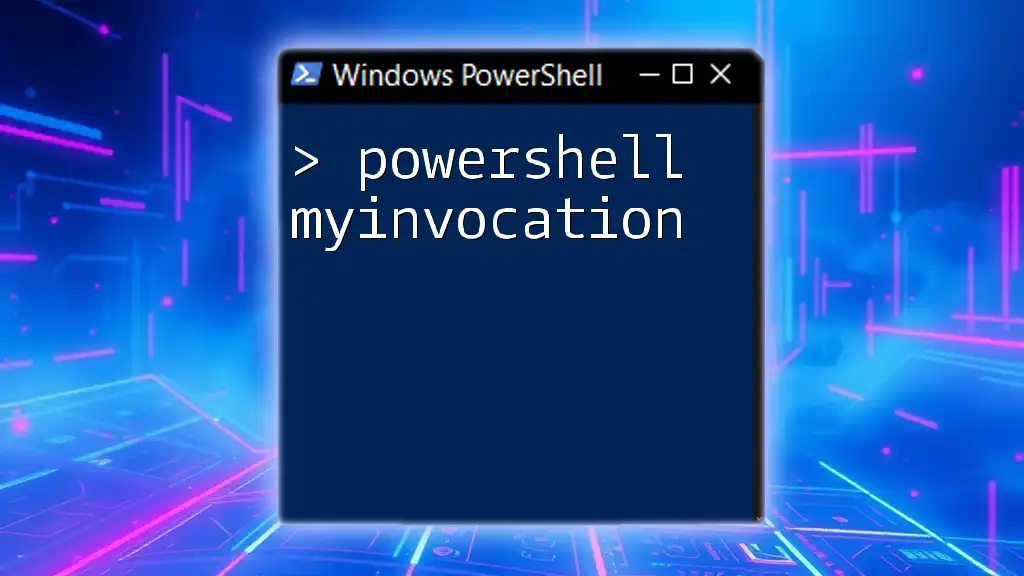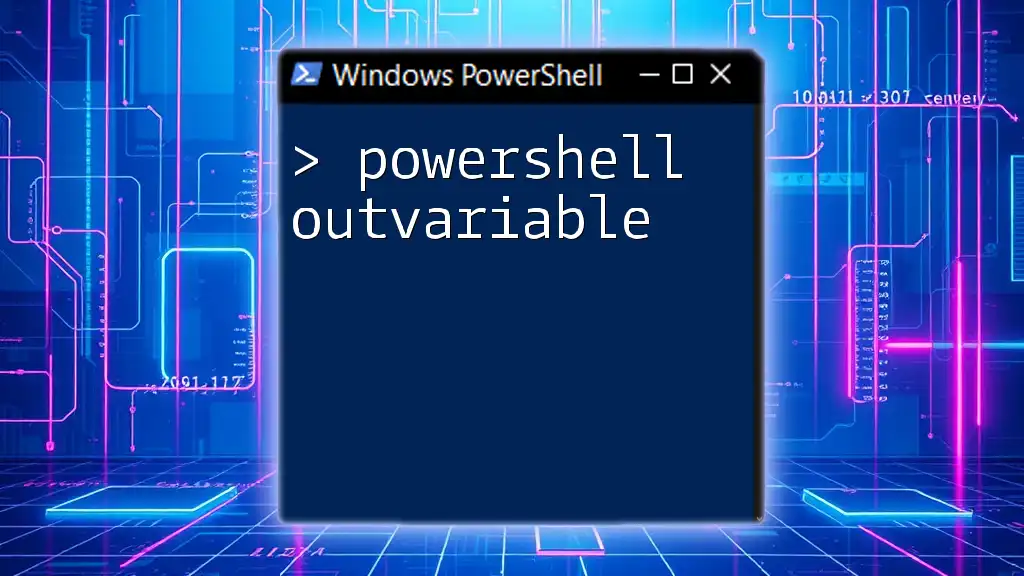The PowerShell modulo operator (%) is used to obtain the remainder of a division operation between two numbers.
Here's a simple code snippet demonstrating its usage:
$result = 10 % 3
Write-Host "The remainder of 10 divided by 3 is $result"
What is Modulo?
The modulo operation computes the remainder of the division of one number by another. For example, when dividing 10 by 3, the whole number part of 10 divided by 3 is 3, and the remainder is 1. Thus, the operation can be represented as:
- 10 modulo 3 = 1
Importance of Modulo in PowerShell
Understanding the modulo operation is crucial for PowerShell scripting and programming in general. The modulo operator allows you to:
- Determine properties of numbers (e.g., checking even or odd).
- Implement conditional logic based on numeric patterns.
- Perform cyclical array indexing and data manipulation efficiently.
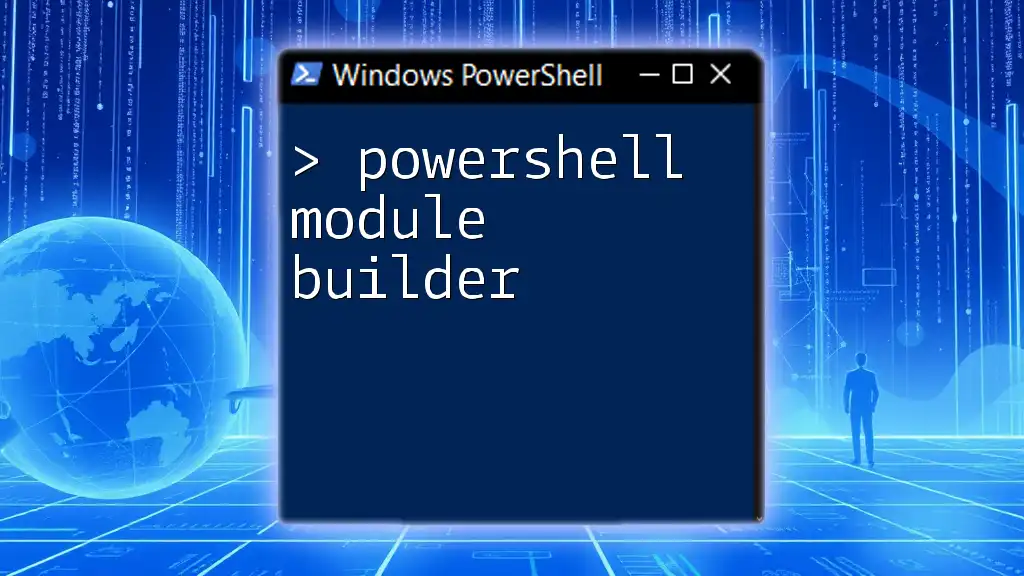
PowerShell Modulus: Understanding the Concept
Overview of PowerShell Modulus
In programming, modulus generally refers to the operation of finding the remainder after division. Unlike regular division which provides a quotient, the modulus focuses exclusively on the leftover amount. This distinction can be important when developing algorithms, making decisions based on numerical properties, and refining logic for your scripts.
The PowerShell Mod Operator
In PowerShell, you can use the mod operator represented by the percent symbol (`%`). The basic syntax for the operator is straightforward:
$remainder = $number1 % $number2
This command will store the remainder of `$number1` divided by `$number2` into the variable `$remainder`.
Examples of Using the Mod Operator
Here are simple examples illustrating how the mod operator can be employed in PowerShell:
# Example 1: Basic Modulus
$remainder1 = 10 % 3 # Output: 1
$remainder2 = 25 % 4 # Output: 1
In these examples, the operation determines the remainder left over when 10 is divided by 3 (which is 1) and 25 divided by 4 (also 1).
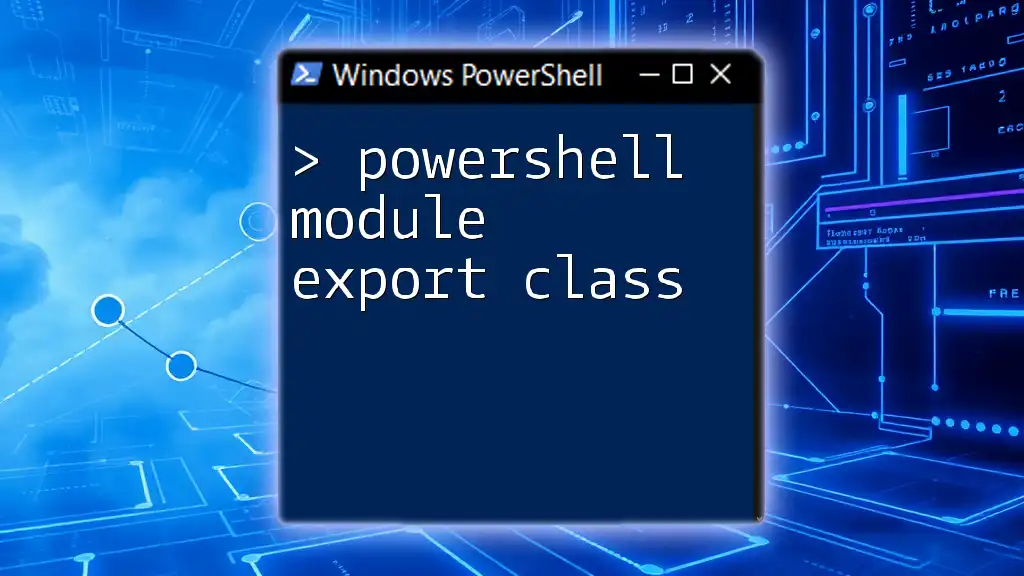
PowerShell Mod Function: A Closer Look
What is the Mod Function?
PowerShell does not have a built-in mod function as part of its core cmdlets. However, with a bit of creativity, you can implement a custom function to replicate a traditional modulus operation. This highlights a useful technique for programming—creating utility functions that can handle specific tasks.
Creating a Custom Mod Function
Here is an example of how you can define a simple custom mod function in PowerShell:
function Modulus {
param (
[int]$numerator,
[int]$denominator
)
return $numerator - ($denominator * [math]::floor($numerator / $denominator))
}
This function takes two parameters: the numerator and denominator. It calculates the modulus by determining the largest multiple of the denominator that is less than the numerator and subtracting this from the numerator.
Example of the Custom Mod Function in Use
You can see how the custom function works by executing the following example:
# Example: Using Custom Modulus Function
$modResult = Modulus 10 3 # Output: 1
In this case, the function successfully mirrors the behavior of the mod operator, returning 1 as the remainder when 10 is divided by 3.
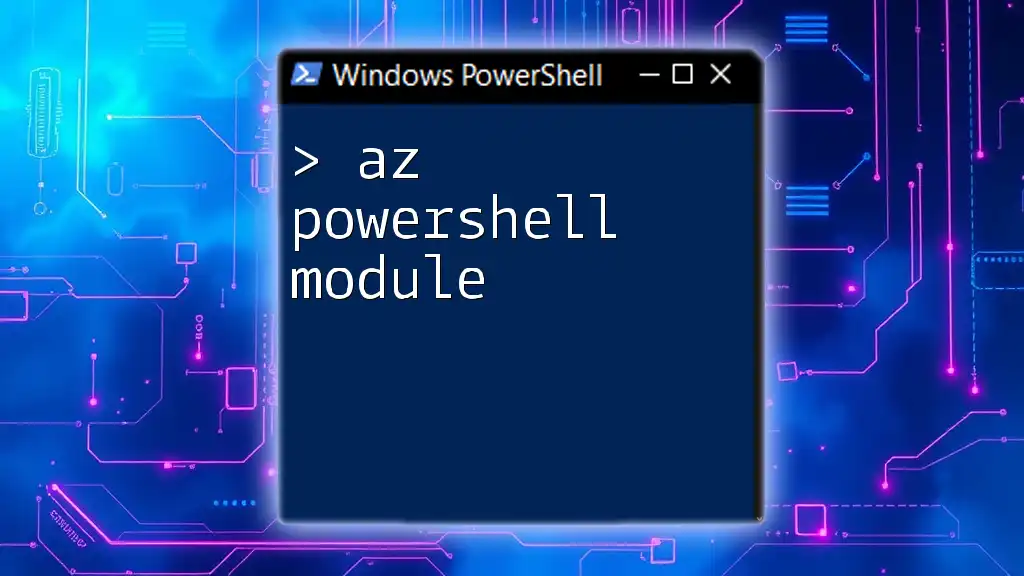
Practical Applications of Modulo in PowerShell
Using Modulo in Conditionals
The mod operator is often used in conditional statements to determine characteristics of numbers. For example, you may want to check whether numbers are even or odd:
# Example: Check Even or Odd Numbers
for ($i = 0; $i -lt 10; $i++) {
if ($i % 2 -eq 0) {
"Even: $i"
} else {
"Odd: $i"
}
}
This loop iterates through numbers 0 to 9 and checks the remainder when divided by 2. If the result is 0, the number is even; otherwise, it's odd.
Modulo in Array Indexing and Data Filtering
The mod operator is practical for cycling through arrays. This allows you to create loops that utilize array elements without exceeding their bounds.
# Example: Cycling Through an Array
$array = @("A", "B", "C", "D")
for ($i = 0; $i -lt 10; $i++) {
$index = $i % $array.Count
$item = $array[$index]
"Item: $item"
}
In this example, the loop iterates ten times and uses the modulus operator to cycle through the array of letters. As `$i` increments, `$index` resets to 0 after reaching the end of the array, allowing repeated access to the items.
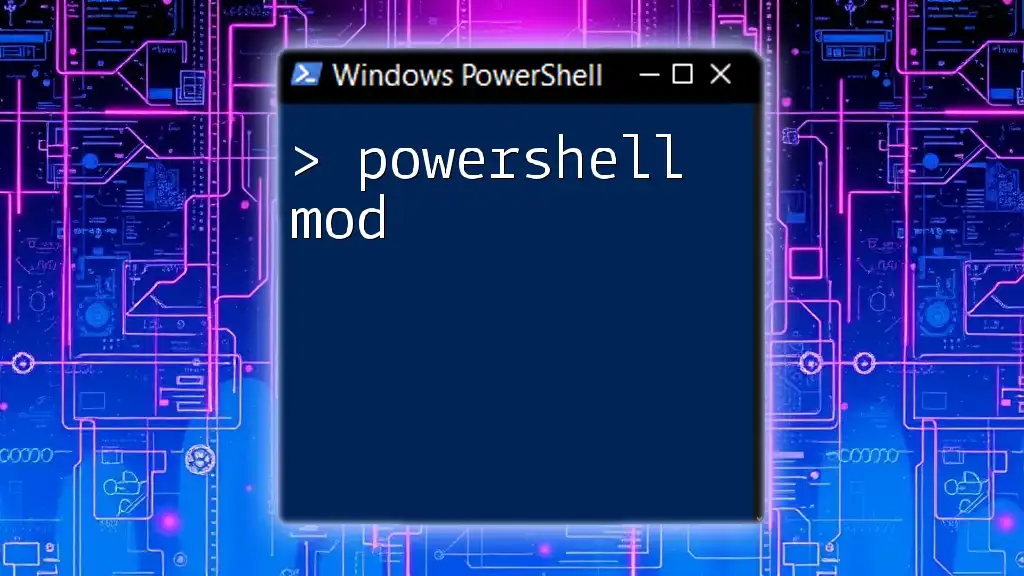
Common Mistakes and Troubleshooting
Misunderstanding of Zero with Modulo
One common mistake involving the modulo operator is attempting to use zero as a denominator. This leads to an error because division by zero is undefined. Always ensure that the denominator is not zero when performing a modulus operation.
# Warning: Division by zero.
$zeroTest = 10 % 0 # This will raise an error; make sure to handle this case.
Performance Considerations When Using Modulo
When dealing with large loops or datasets, the performance of operations can be a concern. While the mod operator is generally efficient, excessive use in critical loops may impact performance. Analyzing the need for modulo versus a straightforward comparison may yield better performance optimizations in specific instances.
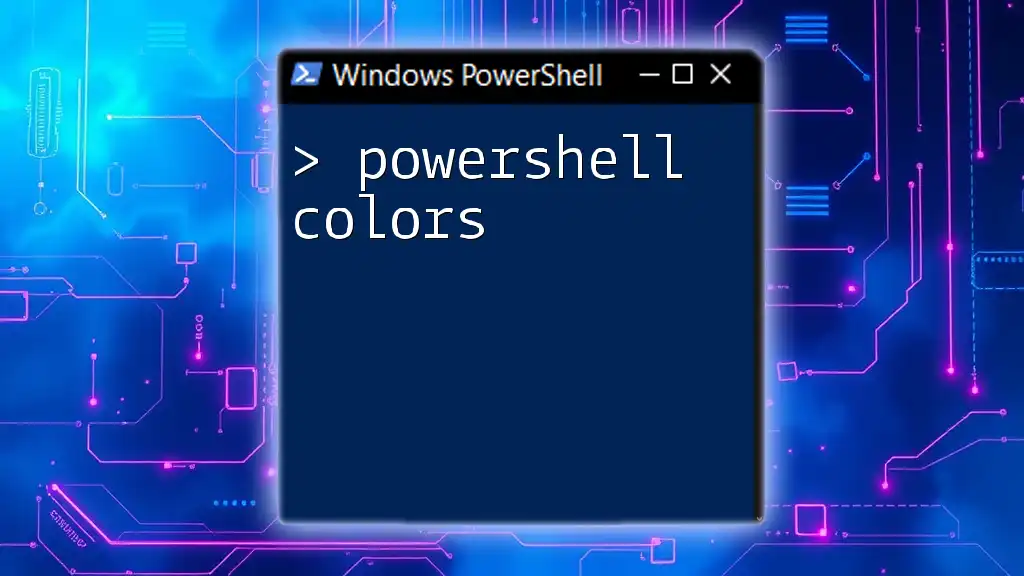
Conclusion
Understanding the PowerShell modulo operation is pivotal for effective scripting and logic formulation. The ability to apply this versatile tool allows you to manage numbers, control flow and create dynamic applications efficiently.
For those looking to further develop their PowerShell skills, experimenting with the provided code snippets and exploring more complex algorithms will deepen your understanding of this essential command. Consider taking additional steps to learn about numerical patterns, control structures, and practical scripting techniques in PowerShell.
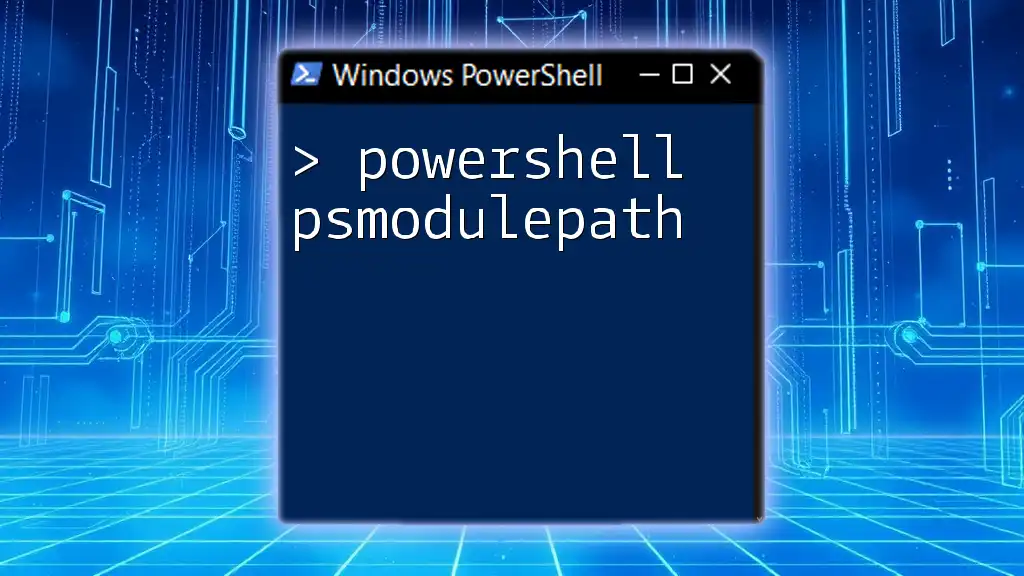
Resources and Further Reading
For additional resources, consider exploring PowerShell documentation, educational platforms, and books dedicated to enhancing your programming skills. Exploring these materials can provide more insights into the capabilities of PowerShell and computational mathematics, ultimately benefiting your scripting journey.

